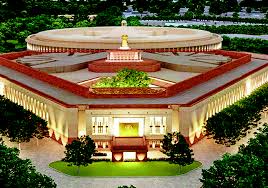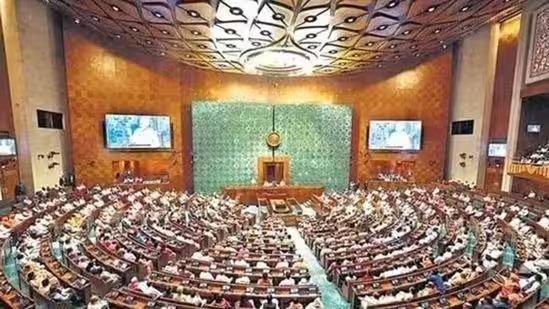
Parliament refers to a formal legislative body in a democratic system of government, responsible for making and passing laws, representing the people, and overseeing the actions of the government. The structure, function, and powers of parliaments can vary from country to country, but they generally share similar roles in shaping a nation’s laws, policies, and governance.
Key Features of Parliament:
- Law-Making Body:
- Parliaments debate and pass legislation on a wide range of issues, such as taxes, education, healthcare, defense, and civil rights. These laws are then implemented by the executive branch of the government.
- Representation:
- Members of Parliament (MPs) are elected by the public to represent the views, interests, and concerns of their constituencies (the areas or districts they represent). In some systems, parliaments also include appointed members or representatives of specific groups.
- Oversight and Accountability:
- Parliaments check the actions of the government to ensure it is acting in the best interests of the public. They can investigate government activities, question ministers, and approve budgets. If needed, parliaments may hold votes of confidence or no-confidence to ensure the government maintains support.
- Debate and Discussion:
- Parliaments serve as forums for open discussion, where elected members can debate proposed laws and policies. The goal is to ensure transparency, provide different viewpoints, and scrutinize decisions before they are finalized.
- Budget and Financial Control:
- In most parliamentary systems, the government must seek parliamentary approval to raise funds through taxation or allocate money for public projects.
Types of Parliamentary Systems:
- Bicameral Parliament:
- Two Houses: This system has two separate chambers, typically an upper house (e.g., Senate, House of Lords) and a lower house (e.g., House of Commons, House of Representatives). Each house may represent different regions, classes, or interests. For example:
- House of Commons: Directly elected by the public, with members (MPs) representing local constituencies.
- House of Lords: May include appointed, hereditary, or life peers, representing more varied sectors like nobility or experts.
- Two Houses: This system has two separate chambers, typically an upper house (e.g., Senate, House of Lords) and a lower house (e.g., House of Commons, House of Representatives). Each house may represent different regions, classes, or interests. For example:
- Unicameral Parliament:
- One House: In this system, the legislature consists of only one chamber, with all elected representatives working together to pass laws. Examples include the Parliament of Denmark and the National Assembly of Finland.
Functions of Parliament:
- Legislation:
- Parliament creates, debates, and passes laws. This includes introducing bills (proposals for new laws), discussing them, amending them, and voting to approve or reject them.
- Scrutiny of the Executive:
- Parliaments hold the government to account through various mechanisms, such as parliamentary questions, debates, and committees. Members of Parliament (MPs) can question government ministers and hold them accountable for their actions and policies.
- Representation of the People:
- MPs represent the concerns and interests of their constituents in the parliamentary process. They listen to the public’s issues, relay these concerns in parliamentary debates, and vote on matters that affect their voters.
- Budget Approval:
- The government must present its budget to the parliament for approval. This is an essential check on the power of the executive branch, ensuring that public funds are used in the public interest.
- Amendments and Reforms:
- Parliaments can amend the constitution (in some countries), reform laws, and address emerging issues or problems that affect society.
The Structure of Parliament:

- Members of Parliament (MPs):
- These are the elected representatives who participate in the decision-making process, present bills, and vote on legislative matters.
- Prime Minister:
- In parliamentary systems like the UK, Canada, and India, the Prime Minister is typically the leader of the majority party in the lower house of Parliament and leads the executive branch. The Prime Minister’s role includes setting government policy and leading the Cabinet.
- Speaker:
- The Speaker is responsible for maintaining order during parliamentary debates, ensuring that discussions remain civil and follow parliamentary rules. The Speaker is often elected by MPs at the start of each parliamentary session.
- Committees:
- Committees are smaller groups within Parliament that focus on specific issues, such as foreign policy, defense, or health. They examine proposed laws in detail, conduct inquiries, and provide recommendations to the full Parliament.
Types of Parliamentary Governments:
- Parliamentary System of Government:
- In countries like the United Kingdom, Canada, and India, the Parliament plays a key role in both lawmaking and executive functions. The Prime Minister is the head of government, while the Monarch or President may serve as a ceremonial head of state.
- Presidential System of Government:
- In countries like the United States, the President is both the head of state and the head of government, and the legislature (Congress in the U.S.) is separate from the executive. However, even in presidential systems, the legislature still has important powers, such as lawmaking and overseeing the executive.
Examples of Parliaments:
- United Kingdom (UK):
- The UK has a bicameral Parliament, consisting of the House of Commons (elected MPs) and the House of Lords (appointed members, including life peers and bishops). The Prime Minister is the head of government, and the Monarch is the ceremonial head of state.
- India:
- India’s Parliament is also bicameral, with the Lok Sabha (House of the People) and the Rajya Sabha (Council of States). The President is the head of state, but the Prime Minister leads the government.
- United States:
- The U.S. has a bicameral Congress, consisting of the Senate and the House of Representatives, which is separate from the executive branch led by the President.
Conclusion:
Parliament is a central institution in democratic governance, ensuring that the government is accountable, laws are created with public input, and the rights of citizens are protected. Its structure and functioning can differ based on the political system of the country, but the core principles of lawmaking, representation, and oversight remain central to all parliamentary systems.

Saurabh
Good work